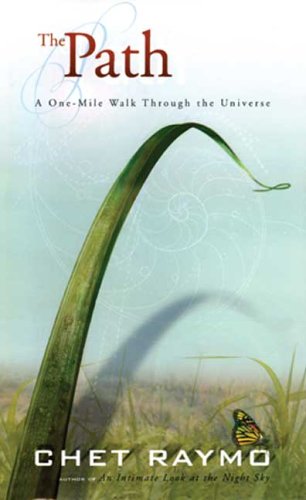Invasive Species Between the Old and New World
Many plants new to North America first sprouted up alongside wharves and shipyards. From there they made their way inland along new roads hacked out of the wilderness, and later along canals and railroad embankments, taking up residence in any sort of disturbed soil. Native plants adapted to quiet precolonial forests and meadows gave little competition to the aggressive intruders. As Pilgrims and Puritans leveled the ancient New England forests, their floral co-colonists thrived in a landscape that soon came to resemble that of their former European home. Plants that thrive in verges, especially, came into their own.
Traffic in the opposite direction was not nearly as successful. Seeds that made it eastward across the Atlantic as stowaways in vessels were met at European shores by native plants long adapted to their cultivated environment. The American newcomers didn't have a chance of competing. But European horticulturalists had a keen interest in plants of the New World and made places for them in gardens and botanical collections. The earliest explorers of the North American continent included avid natural historians who collected plants and animals for shipment to Europe, an often ill-fated venture. Consider the misfortune-prone Scot, John Goldie, who vigorously botanized in Canada and the northern United States at about the time the Ameses began their shovel-making operations in North Easton. His efforts to inform the Old World of the treasures of the New were fraught with uncertainty He put his hardwon specimens on sailing ships bound for home; one, two, three collections went astray, one in a shipwreck, two vanishing in transit, sea captains responsible for cargoes of economic importance could hardly be expected to pay much mind to packages of roots and seeds. Ever persistent, Goldie finally managed to get a collection of plants back to Scotland.
Notes:
How plants came across the sea in both directions to colonize North American and, to a lesser degree, Europe.
Folksonomies: environmentalism botany invasive species
Taxonomies:
/health and fitness/disease/aids and hiv (0.577346)
/business and industrial/agriculture and forestry/forestry (0.577285)
/society/sex (0.575433)
Keywords:
New England forests (0.925735 (neutral:0.000000)), New World (0.904036 (positive:0.157012)), native plants (0.901111 (negative:-0.464097)), avid natural historians (0.877302 (neutral:0.000000)), North American continent (0.873443 (neutral:0.000000)), northern United States (0.863819 (neutral:0.000000)), World How plants (0.768366 (negative:-0.342129)), precolonial forests (0.762275 (negative:-0.464097)), lesser degree (0.745221 (negative:-0.362453)), Invasive Species (0.743406 (negative:-0.342129)), railroad embankments (0.736856 (neutral:0.000000)), aggressive intruders (0.736356 (negative:-0.464097)), disturbed soil (0.735587 (positive:0.267178)), John Goldie (0.735573 (positive:0.327917)), new roads (0.735170 (negative:-0.408563)), European horticulturalists (0.726102 (positive:0.499142)), opposite direction (0.723515 (negative:-0.388928)), little competition (0.721669 (negative:-0.464097)), American newcomers (0.717064 (negative:-0.232534)), floral co-colonists (0.714770 (neutral:0.000000)), European home (0.712924 (neutral:0.000000)), ill-fated venture (0.712902 (negative:-0.252146)), European shores (0.709894 (neutral:0.000000)), misfortune-prone Scot (0.706343 (neutral:0.000000)), sea captains (0.704814 (neutral:0.000000)), earliest explorers (0.703384 (neutral:0.000000)), North Easton (0.702070 (neutral:0.000000)), Old World (0.701101 (neutral:0.000000)), sailing ships (0.698249 (neutral:0.000000)), shovel-making operations (0.697633 (neutral:0.000000))
Entities:
John Goldie:Person (0.877497 (positive:0.327917)), North American:FieldTerminology (0.846955 (negative:-0.342129)), Europe:Continent (0.699468 (neutral:0.000000)), North America:Continent (0.667784 (neutral:0.000000)), North Easton:City (0.614285 (neutral:0.000000)), New England:Facility (0.600795 (neutral:0.000000)), European shores:GeographicFeature (0.536827 (neutral:0.000000)), Atlantic:GeographicFeature (0.495020 (neutral:0.000000)), Canada:Country (0.442206 (neutral:0.000000)), Scotland:Country (0.435834 (neutral:0.000000)), United States:Country (0.434790 (neutral:0.000000))
Concepts:
United States (0.983756): website | dbpedia | ciaFactbook | freebase | opencyc | yago
North America (0.774767): geo | dbpedia | freebase | yago
Europe (0.766849): dbpedia | freebase | yago
Continent (0.736025): dbpedia | freebase | opencyc
Americas (0.620951): dbpedia | freebase | opencyc | yago
Indigenous peoples of the Americas (0.565089): dbpedia | freebase | yago
South America (0.522060): dbpedia | freebase | yago
Caribbean (0.501147): geo | dbpedia | freebase | yago





